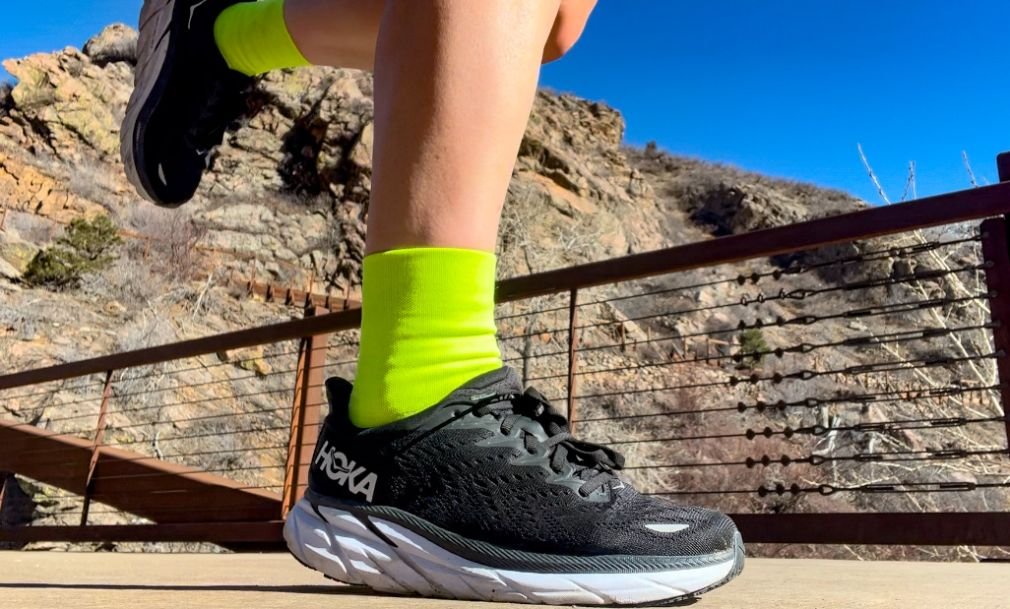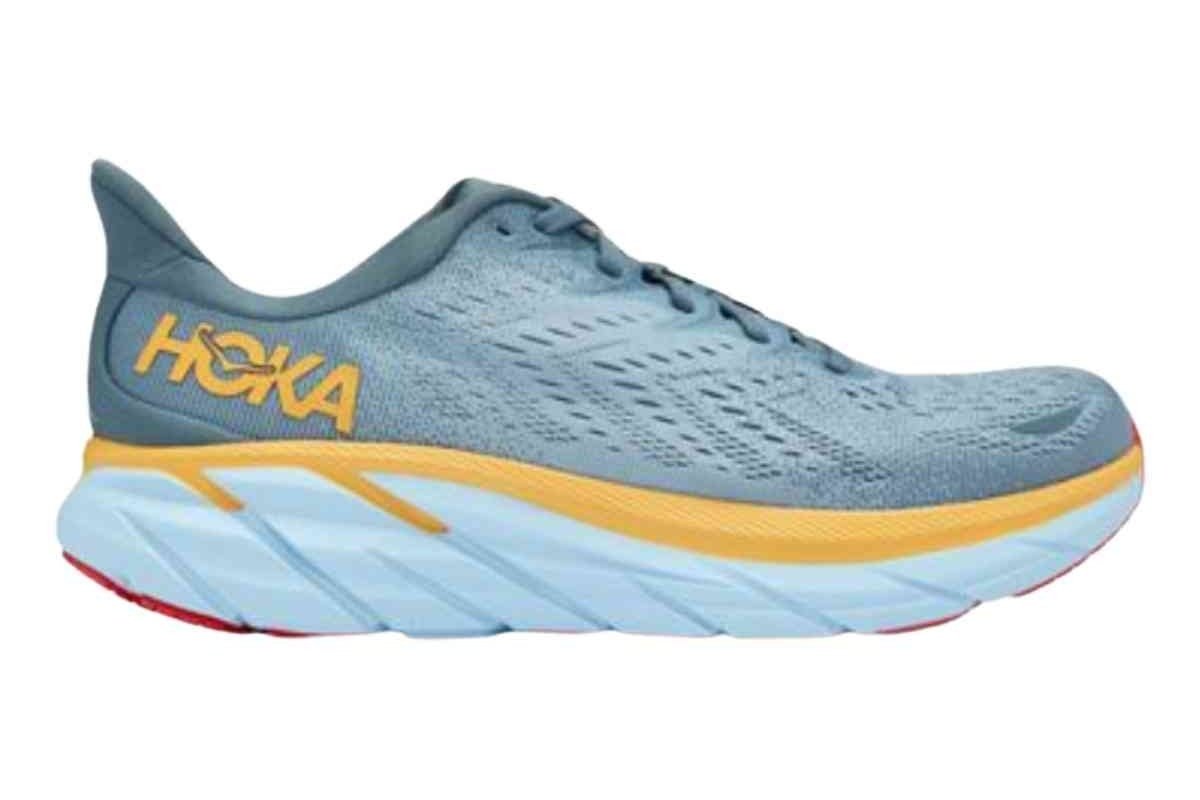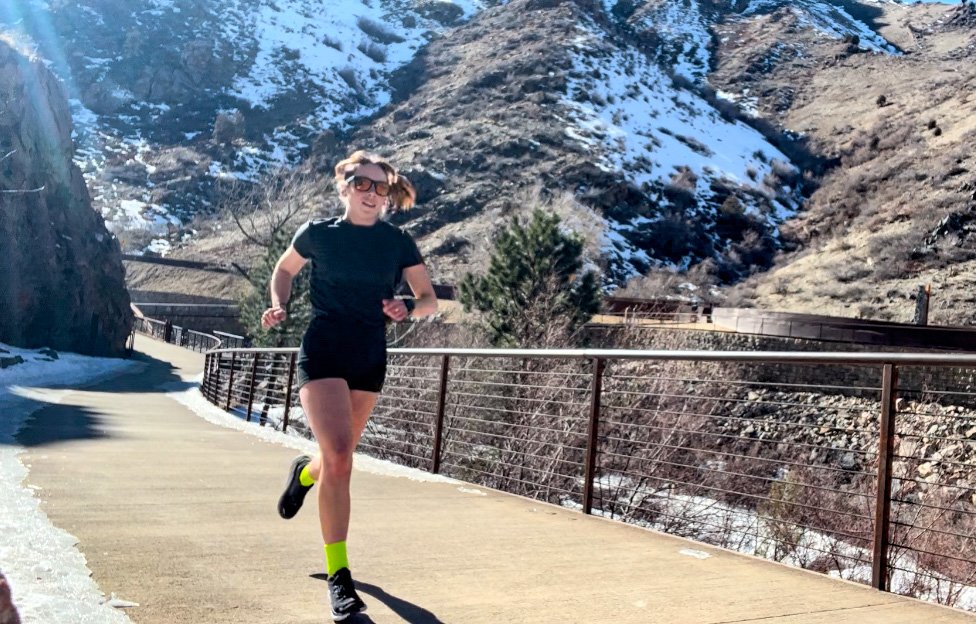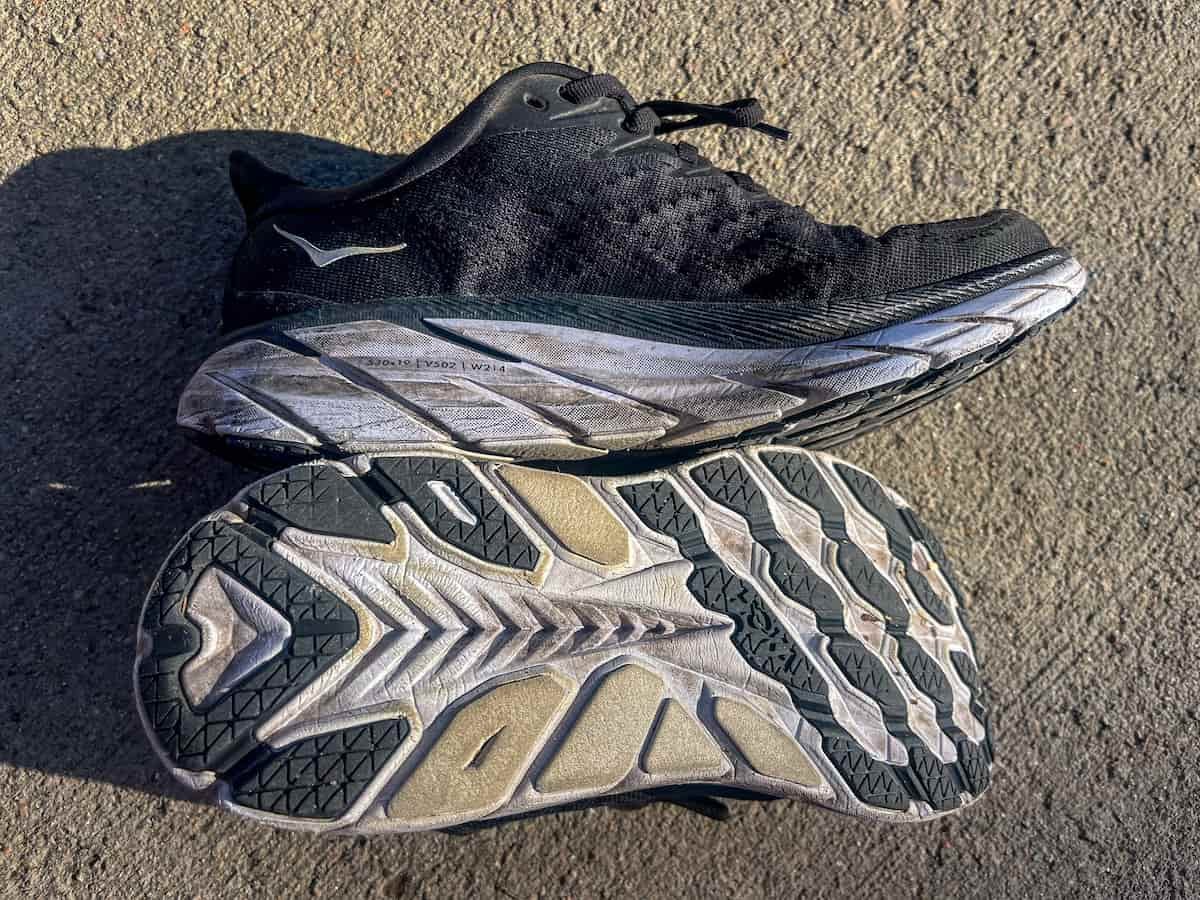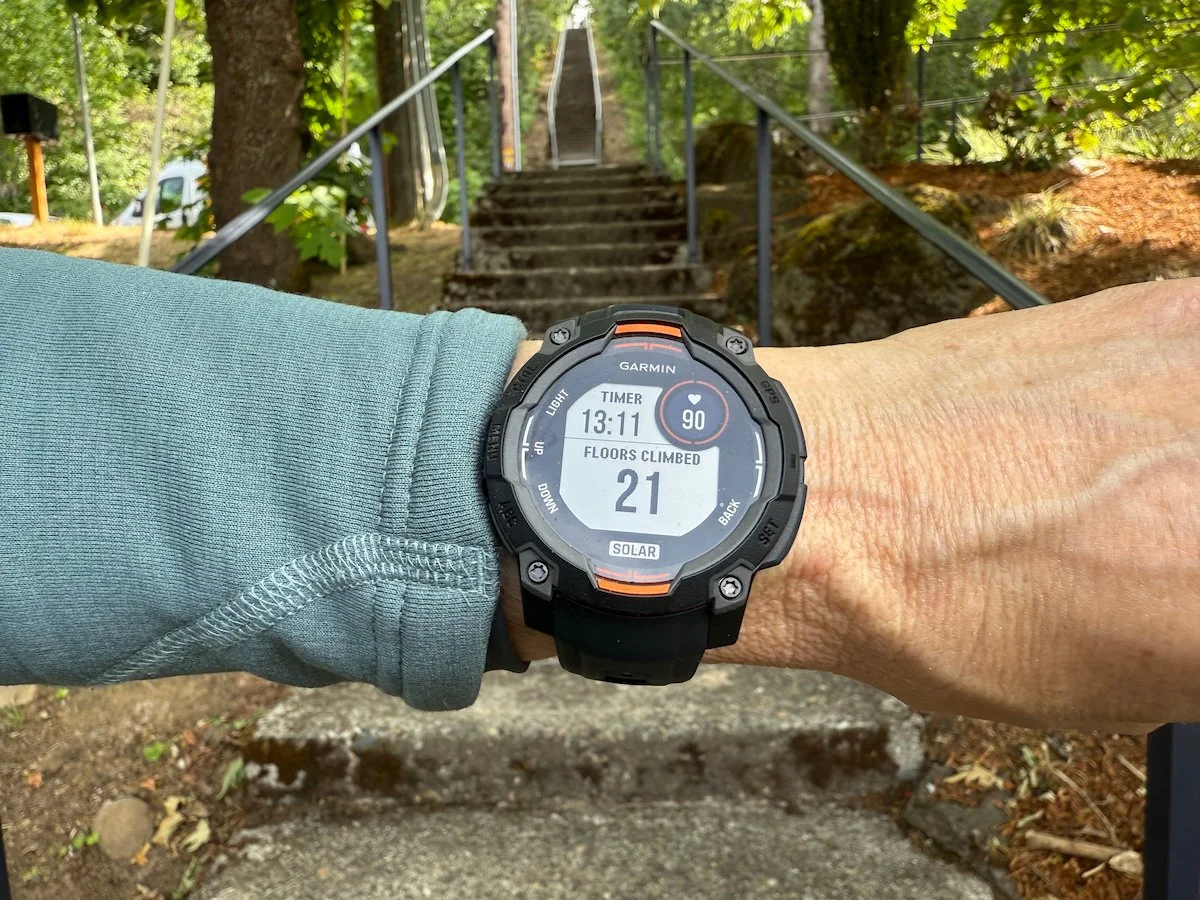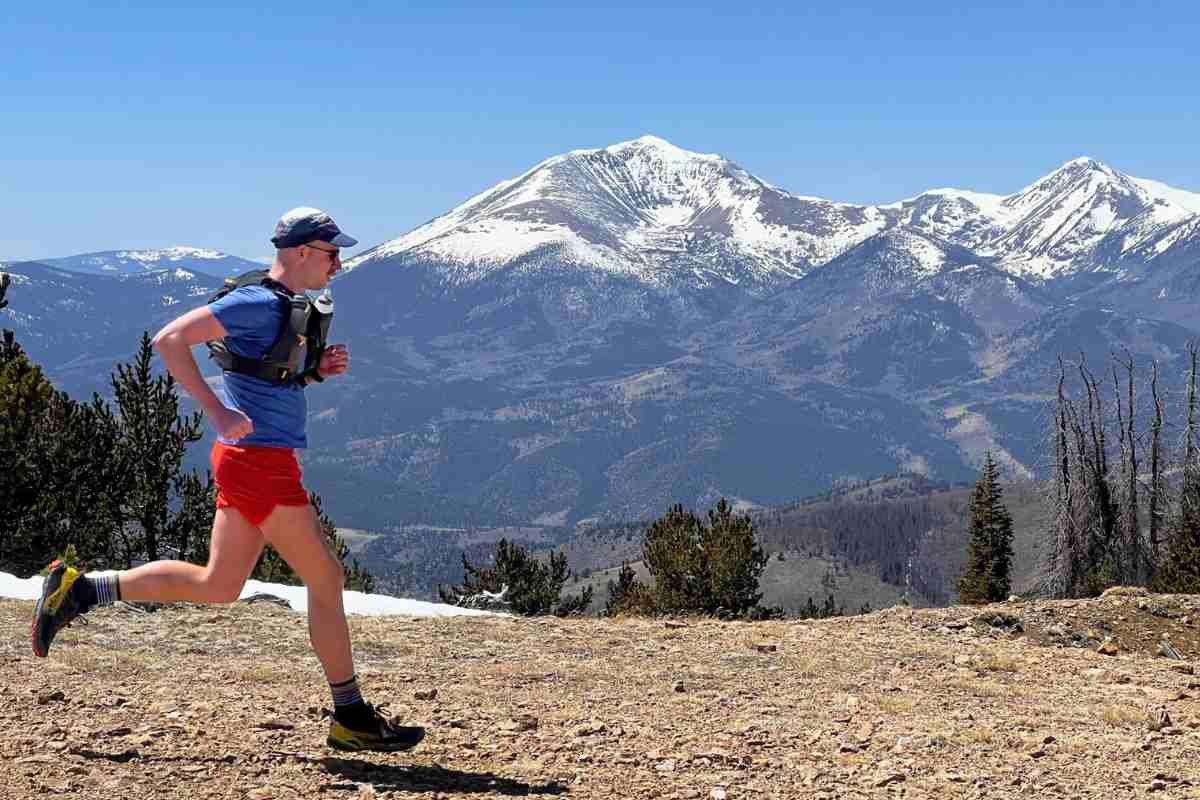Hoka Clifton 8 Running Shoe Review
An in-depth review of the Hoka Clifton 8 shoe for running, walking, and active recovery
Hoka Clifton 8 are a great shoe for daily easy runs and active recovery for race training.
Editor’s Note: The Hoka Clifton 8 have been discontinued are getting harder to find. We still think for some runners, they are a worth getting— if you can find them.
For runners looking for a solid running shoe for avid walkers, joggers, or active recovery as part of hard training, the men’s and women’s Hoka Clifton 8 is the cushioned, comfortable fit for the job. After more than a year of testing, these are still our go-to show for a comfortable fit during recovery runs.
Hoka Clifton 8’s neutral support, maximum cushioning with responsiveness at the forefoot, light weight, and Meta-Rocker technology in the sole all provide a soft, smooth fit. In this Hoka Clifton 8 review, I use my experience as a running coach and former Division I competitive runner to inform what makes this shoe special, who it is for, and when to use it.
I base this in-depth, long-term review on a year’s worth of continuous testing of the Hoka Clifton 8 and comparing it to similar shoes.
As mentioned above the Hoka Clifton 8 has been discontinued but you can find many of the similar features in the newest model. Learn more in our Hoka Clifton 9 shoe review or our review of the HOKA Clifton 10 here.
COMPARE PRICES OF THE HOKA CLIFTON 8
MEN'S
WOMEN'S
We create reader-supported, objective gear reviews independently selected by our editors. This story may contain affiliate links, which help fund our website. When you click on the links to purchase gear, we may get a commission – without costing you an extra cent. Thank you for supporting our work and mission of outdoor coverage for every body! Learn more.
Hoka Clifton 8 Specifications
Cushion: maximum cushion
Heel-to-Toe Drop (mm): 5 mm
Stability: neutral
Upper: vegan mesh
Midsole: compression molded EVA
Outsole: rubber
Weight (pair): 14.4 oz (women's), 1 lb. 1.8 oz.
COMPARISON TABLE WITH SIMILAR MODELS
See our section below where we go into detail about the differences between the Hoka Clifton 8 and different models.
| RUNNING SHOE | MAJOR DIFFERENCES |
|---|---|
| Hoka Clifton 8 Men's Women's |
n/a |
| Hoka Clifton 9 Men's Women's |
Higher stack height, firmer foam |
| On Cloudsurfer Men's Women's |
Similar cushion, higher heel-to-toe drop |
| Saucony Endorphin Shift 3 Men's Women's |
Very similar but a little pricier at $150 |
| New Balance Fresh Foam X 860v13 Men's Women's |
Higher heel-to-toe drop (8mm) |
Interested in running? Check out the Running Gear section:
WHAT WE LIKED
Cushioning, neutral stability, and early-stage Meta-Rocker are helpful for reducing impact and can help mitigate injuries
All the shoe specs are middle-of-the-road, making this a people-pleasing shoe and a good option for most people
Ample support at a light weight
Great option for active recovery, jogging, some maintenance runs, and walking
The author lacing up the Hoka Clifton 8 on a snowy trail in Colorado.
Features
Fit
The Hoka Clifton 8 narrows at the mid-foot and provides more space in the forefoot/toe box. My feet are on the narrow side so I had a little extra room, but not too much to cause sliding or discomfort. If you have average or wider feet, this shoe will likely fit comfortably (plus the shoes are available in Wide).
Hoka shoes consistently make the lists of “best running shoes for wide feet,” and the Clifton 8 is about as people-pleasing as a running shoe comes. The roomier nature of these cushioned shoe makes them ideal for walks and recovery runs, as opposed to the more snug fit of speed-oriented shoes.
If you have particularly narrow feet, it’s a good idea to try these on before purchasing to ensure your feet won’t feel like they’re sliding around too much. While I have relatively narrow feet and did not experience any discomfort during my short runs and walks in these, others may feel differently or prefer a narrower shoe (e.g., Adidas, Brooks, and New Balance shoes are common favorites among folks with narrow feet).
Cushion
The “balanced” cushion of the Hoka Clifton 8s means there’s a little give in the insole, while the less cushioned sole near the forefoot allows for a spring if you want to pick up the pace. This cushion creates a feeling of responsiveness or bounce in your step while offering enough give in each step for comfort.
The EVA (ethylene vinyl acetate) midsole is compression molded for comfort and “give,” reducing the impact with each step.
While Hoka calls this a “balanced” cushion, it is essential to note they also label the Cliftons a “maximum cushion,” meaning it is less suitable for speed and more suitable for recovery or light runs.
The HOKA brand spent ten years building a reputation for cushion. (HOKA previously went by the name HOKA ONE ONE and dropped it for 2022.) The Clifton 8s are a great shoe for runners who want comfort and some bounce.
Many running shoes are less comfortable for walking. The Hoka Clifton 8s are an excellent crossover shoe and make a great walking shoe or shoe for runners looking for active recovery.
Related: In terms of cushion, comfort, and performance, if you like the Clifton, you might also like HOKA’s Bondi 8, which we recently tested. Read our full Bondi 8 review.
Comfort
Slipping the Hoka Clifton 8 on after a tough, snowy trail run is slipping into comfort. It’s not the instant bouncy cushion offered by their Hoka Ora Slides or the Oofos Ooaah slide in our Best Recovery Shoes guide, but they are a comfortable running shoe option for recovery, light runs, and everyday use. As cushioned as “max cushion” implies, don’t expect the same cushiony feel as the Hoka Oras, but the level of responsiveness helps propel the body through runs without having to work as hard.
In this photo, you can see some pronation, and the Clifton 8 shoes offer stability to counter pronation.
Stability
The Hoka Clifton 8 shoes offer neutral arch support; they are ideal for folks with a standard (or “correct”) stride.
A standard stride means one’s feet land evenly rather than rolling inward, causing the arches to flatten (pronation or overpronation), or rolling outward (supination or underpronation).
A neutral running shoe is also good for folks who use corrective orthotic inserts to fix their stride. As someone with hip dysplasia and arthritis on one side, I experience one pronating foot and one neutral foot, so a neutral shoe like the Clifton 8 is a good slate for my corrective inserts.
Close-up of the meta-rocker on the Clifton 8.
Ride
The curved sole of Hoka shoes—called Meta-Rocker—prevents the foot from landing flat and allows for a bit of propulsion in the stride. The Clifton 8s have an “early stage Meta-Rocker,'' which means the rocking motion of the foot is smoother from heel to forefoot, as opposed to the “late stage Meta-Rocker,” which puts the rocker point closer to the toe for increased stability.
The early-stage Meta-Rocker is designed for faster movements, whereas the late-stage Meta-Rocker is better suited for everyday use. Both reduce and redistribute the pressure on the soles of the feet as they land, making them good options for anyone with plantar fasciitis or similar injuries.
This feature adds some versatility to the Hoka Clifton 8s; while the cushion makes these a nice recovery shoe—something to wear walking or on short runs—they still make a solid choice as a daily trainer for those running more consistent miles.
The grip and traction makes the Hoka Clifton 8 a shoe suited for road, paved or non-technical trails, and walking.
Grip and Traction
The outsole of this Hoka shoe offers appropriate, reliable traction for road running. I would not recommend these shoes for trail running like a dedicated trail running shoe. But they're great on non-technical trails, road running, and walks.
Break-In Time
As a rule of thumb, it’s a good idea to ease into a new pair of shoes, especially if you’re trying a new-to-you pair or you’ve been running in really worn-down shoes. Shocking your feet with a new fit can throw off your stride and cause unnecessary pain, so it can be a good idea to spend a week or so alternating between a new pair and the old. Fortunately, the Clifton 8s don’t take long to break in as far as fit and comfort go.
Suppose you’re transitioning from another neutral shoe with a balanced cushion like the Clifton 8s. The break-in time will be less than if you’re transitioning from a shoe with more stability support for overpronation. (Again, overpronation is when your feet roll inward and cause added strain on your arch-supporting muscles). Examples of shoes that might take more break-in time are the men's and women's New Balance Fresh Foam X 860v13, or shoes with far more or far less cushion.
Other aspects to consider when breaking in new shoes are the weight and heel-to-toe drop differences from your previous pair. For example, I typically train in Saucony Ride 15 (men's and women's), which weighs about 1.2 oz more per shoe and has an 8mm drop rather than a 5mm drop (for more info on the heel-to-toe drop, see below).
If I wanted to switch to the Clifton 8s as a trainer—with less weight and 3mm less of a drop, I would want to be careful not to make an immediate switch, but instead alternate every other run for a week or two. However, if I chose to make the Clifton 8s a recovery run-only shoe, the difference between the two wouldn’t likely be a big enough shock to matter.
Fortunately, as this shoe is pretty middle-of-the-road in most categories, they shouldn’t take long for anyone to break in.
Volume
As far as numbers go, the volume of the men’s shoe is 655.00 cm3, and the women’s is 502.00 cm3. But that doesn't mean much unless you know the volume of other shoes. Volume refers to the amount of space your feet take up and often, more specifically, refers to how tall your feet are. As this isn’t a metric most runners use when choosing a shoe, it can be challenging to find this information in other shoes, and unless you have particularly “tall” or “short” feet, you likely won’t notice issues with where the collar of the shoe.
Weight
The women’s pair weighs about 7.2 oz while the men’s weighs about 8.9, making them about the same weight or a little lighter than similar models. I was struck by how light these shoes felt while testing them. This pair feels surprisingly lightweight for how chunky Hokas appear, and it even weighs slightly less than my usual trainers (the Saucony Ride). This pair would make a nice recovery shoe, as recovery runs or walks aim to move the body more gently than usual without overexerting. So a heavier pair of shoes would be less fun to drag around with likely tired legs.
Heel-to-Toe Drop
At 5mm, the Clifton 8 is considered a mid-drop shoe. It offers some stability without too much motion control.
The heel-to-toe drop of a shoe tells us how close to our “natural” gait this shoe will help us land, versus how much stability the shoe offers to correct a gait. Technically, heel-to-toe drop is the height difference between the midsole and the forefoot. A zero-drop and minimalist shoes, for example, would offer no height difference between the heel of the shoe and the forefoot. In theory, this allows runners to land as they naturally do, which is great for people with excellent form.
On the other hand, a more stability or motion-control-focused shoe might have an 8+ mm drop. This lessens the impact if you're a heel striker (that thing we aren’t supposed to do as runners, but that many of us still, in fact, do). By cushioning the back to the shoe near the heel cup, the goal is to help ease the foot into a smoother stride. A few millimeters may not sound like much, but throughout a run, it can make a big difference in how you feel.
It’s important to note that there’s a lot of discourse (and marketing) in this arena stating one option is better than the other, but it’s entirely dependent on your needs as a runner or walker. Knowing what is best for your feet is hard sometimes without trial and error, and therefore even harder if you’re new to running.
For new runners, or folks looking into purchasing an everyday walking shoe, a middle-of-the-road shoe like the Hoka Clifton (i.e., mid-drop, balanced cushion, neutral stability) is the best bet. If it doesn’t feel right, you can change it up from that midpoint.
On the other hand, if you know of specific injuries you’re trying to heal or avoid, you may be able to determine the best heel-drop range from there. Zero or low-drop might be better for folks with immaculate form (i.e., their feet land precisely as they should to avoid injuries around the middle or forefoot). A high-drop shoe might better support runners that naturally heel strike.
Regardless, if you’re looking to switch from a zero-drop or high-drop running shoe to a mid-drop shoe like the Clifton 8, you’ll want to ease into the transition to not shock your body with a change in gait.
Durability
The tread and uppers of the Hoka Clifton 8 have held up well after a year of use.
We feel just as confident in the Hoka Clifton 8 after a year of use as we did when we wrote this review. The tread and uppers of the Hoka Clifton 8 have held up well after a year of using these shoes every week — if not more — during our recovery runs.
While the shoes are meant to last 300-500 miles, 250-300 is probably a better expectation for most runners. The durability will, of course, depend on the runner's frame, the state of the terrain, and the general conditions in which the shoes are worn.
In any case, you can expect about the same level of durability and miles in the Hoka Clifton 8 as any other typical running shoe. I spent 20 hours testing these running shoes and they hardly show signs of wear (Note: to be more inclusive of different types of runners, Treeline Review tracks time in shoes instead of mileage).
Close up of the mesh on the Hoka Clifton 8
Breathability
The upper mesh makes this shoe breathable and lighter for comfortable longer outings. This feature prevents excessive sweat buildup and, as a result, prevents blisters on a long run. Nearly all running shoes offer this or a similar feature, though many appreciate that Hoka makes the Clifton 8 upper mesh with vegan materials.
Warmth
Like most road runners, this shoe is not engineered to keep your feet warm and dry, so it would not be ideal for frigid conditions.
Long laces on the Hoka Clifton 8 help can help tighten the shoe correctly, but may be too much for narrow feet.
Laces/Lockdown
The long laces can pull the shoe tight enough around the midfoot and ankle to stay stable. Still, folks with more narrow feet may experience too much room in the forefoot/toe box area, so it’s worth testing the fit ahead of time if a wider toe box might be uncomfortable for you. However, this model could be ideal if you prefer a wider toe box.
Reflective Material
While there are some reflective elements in the Hoka Clifton 8, they are small and not enough to boost safety when running in the dark. If reflective gear is a priority for you, check out our Best Reflective Gear for Running in the Dark guide.
Value
The regular price of a pair of Hoka Clifton 8 shoes is $140 (though they’re currently on sale for $111.99 on Hoka’s website), which is par for the course for neutral, balanced, and cushioned running shoes.
For comparison, here are several pairs of shoes that are comparable:
Sustainability/Ethical Company
The HOKA Clifton 8’s have a vegan engineered mesh upper and are made of recycled materials. In 2016, HOKA joined the United National Global Compact (UNGC), a corporate sustainability initiative committed to responsible labor standards and environmental practices. You can learn more about Hoka’s sustainability goals here.
Hoka also shares their goals and reports on clean energy, carbon and greenhouse gas emissions, water, and waste here. Transparency and tracking are both important steps towards sustainability and ethical manufacturing.
Close up on the Meta-Rocker on the Hoka Clifton 8
Other Features
Extended Arches Pull Tab
The back of the upper around the heel extends out for ease of slipping these shoes on or off.
Meta-Rocker
As mentioned in the Ride section, Hoka uses its early-stage Meta-Rocker structure to guide the foot through a smooth landing from heel to forefoot. You’ll hear different opinions–from pro runners and everyday customer reviews – on whether that’s a beneficial way to strike the foot.
“Heel striking” puts runners at risk for hip or knee injury, whereas striking at the forefoot puts a runner at risk for various foot or ankle injuries. Regardless, the purpose of the Meta-Rocker is to prevent hard, flat-footed slapping on the pavement that could cause pain or injury. This technology is most beneficial for folks who have experienced plantar fasciitis or other foot injuries, as this reduces and redistributes the pressure on the soles of the feet.
Plush tongue
The shoe’s tongue is soft and snug at the top of the foot. This feature can be comfortable for some runners or too narrow for others. However, even if this makes the shoe feel tighter, the plush nature of the tongue makes the tightness less of an issue.
The Hoka Clifton 8 are well suited for easy runs and active recovery for advanced runners or daily training for casual runners.
should i buy The Hoka Clifton 8?
If you are the type of runner who is looking for a comfortable shoe for training runs, recovery runs after races or big mile days, or avid walking, the Hoka Clifton 8 is the shoe for you.
Because of their neutral support and more reactive (less cushioned) sole at the forefoot, the Hoka Clifton 8 shoes would also make reliable regular trainers for runners who are doing an easy run or mild training.
Runners training to compete might like this shoe for recovery days after a big day of training.
Casual runners or more dedicated runners on shorter run days will enjoy the cushioning and neutral support. Folks looking for a good walking shoe will enjoy the same comfort for their walks.
We think the Clifton 8s work great for all but high-intensity training.
Close-up on the Meta Rocker on the Hoka Clifton.
WHAT COULD BE BETTER
If you’re looking for some bounce in your stride or a training shoe that will propel you through speed workouts, the Hoka Clifton 8 is not the shoe for you. The extra cushioning relieves some of the pounding—making it a good choice as a recovery shoe—but it won’t put a lot of pep in your step like shoes with less cushion would (e.g., the Saucony Kinvara 13 or other training-oriented shoes).
Depending on your needs as a runner (support for overpronation or supination, more or less heel-to-toe drop, etc.), this pair may not be the best fit for you.
However, as a consistently middle-of-the-road shoe in most categories, it is a solid people-pleaser. This shoe also may not be the most comfortable fit for runners with really narrow feet, so I recommend testing them before committing.
hoka clifton 8 vs hoka clifton 9
Hoka released the Hoka Clifton 9 (men’s and women’s), a newer version of the Hoka Clifton 8.
After hundreds of miles and hours in these recently-released shoes—in men’s, women’s, regular, and wide-fit versions—we found they have many similarities with the Hoka 8.
The toe box is roomier, which is ideal for those with longer toes or wider feet. However, our testers with shorter toes prefer the Hoka Clifton 8.
The vegan mesh on the Hoka Clifton 9 is thinner, which breathes better in warm temperatures. You can read our review of the Hoka Clifton 9 for more comparisons.
COMPARE PRICES ON THE CLIFTON 9
MEN'S
WOMEN'S
SIMILAR MODELS/ OTHER SHOES to COnsider
When it comes to running shoes, comfort is the most important. There’s no point in forcing a pair just because others like it. Below are common alternatives folks tend to like if the Hoka Clifton 8’s don’t work out:
On Cloudsurfer (men's and women's): higher heel-to-toe drop (10mm)
New Balance Fresh Foam 1080 v12 (men's and women's): higher heel-to-toe drop (8mm)
Saucony Triumph 20 (men's and women's): higher heel-to-toe drop (10mm)
Saucony Kinvara 13 (men's and women's) : slightly lighter, similar drop (4mm)
Brooks Glycerin 20 (men's and women's): more cushioned and motion controlled (10mm drop)
Hoka Clifton Edge: now discontinued, but was Hoka's take on the Clifton for longer runs (5 mm)
ON CLOUDSURFER
The On Cloudsurfer is comparable to the Hoka Clifton 9 with lots of cushion and neutral support. The most significant difference is the Cloudsurfer’s higher heel-to-toe drop (10mm to the Clifton’s 5mm). The Hoka Clifton won our Best Active Recovery Shoe in our Best Recovery Shoes guide, and the On Cloudsurfer won Best for Recovery Runs.
To differentiate the two categories, the On Cloudsurfer shines as a daily run shoe with lots of cushion, whereas we appreciate the Hoka Clifton for its versatility–it’s great for almost any activity, like running, walking, lifting, and easy bike rides. Ultimately, both are great shoes for recovery. Check out our review of the On Cloudsurfer here.
COMPARE PRICES OF THE ON CLOUDSURFER
MEN'S
WOMEN'S
Saucony Endorphin Shift 3
The Saucony Endorphin Shift 3 is a close match to the Hoka Cliftons. Similar in support, cushion, weight (about one ounce heavier), and mid-drop (4mm), it’s one of the closest comparable alternatives. It’s a little pricier at $150, but if it’s more comfortable (or more available) than the Hoka Cliftons, it would be a good walking or recovery run alternative.
COMPARE PRICES OF THE SAUCONY ENDORPHIN SHIFT 3
MEN'S
WOMEN'S
Hoka Bondi 8
Finally, if this particular pair of Hokas doesn’t work for you, you may want to try another Hoka running shoe. The Hoka Bondi 8 offer similar heel-to-toe drop and neutral stability with more cushion than the Cliftons, which is a good option for more walking and recovery activities.
COMPARE PRICES OF THE HOKA BONDI 8
MEN'S
WOMEN'S
Hoka Kawana
The Hoka Kawana also offers the same heel-to-toe drop, neutral stability, and balanced cushion. In addition, it boasts their Swallowtail™ heel geometry & extended crash pad to reduce impact with each step, making this a good everyday trainer (and potentially helpful for the foot injury-prone). The Hoka Clifton Edge are designed as more of a road running shoe.
COMPARE PRICES OF THE HOKA KAWANA
MEN'S
WOMEN'S
Why you should trust us / About the Author
Becca ran D1 cross country and track for Indiana University—Purdue University of Indianapolis (IUPUI) and continued racing everything from elite miles to an ultramarathon in her post-collegiate years. She earned a USATF Level 1 certification and coached boys and girls high school cross country and track in Indianapolis for four years. Becca then joined the IUPUI women’s distance coaching staff as a volunteer assistant coach in 2020-2021.
She geeks out on trail running, track and field, and cries every time she watches a marathon (they’re just so beautiful!). After notching a few small FKTs under her belt in 2020, she was diagnosed with hip arthritis and now channels her passion for running into coaching, writing, creating training plans for her friends, hiking, and running when her hip allows it.
Becca tested the Hoka Clifton 8 alongside other running shoes for to help other runners find the right shoes for their feet.
You can read more of Becca's work at her blog or on her author page.

